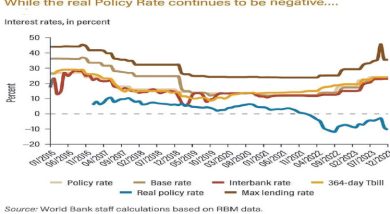Malawi agriculture output under threat
Malawi faces a potential decline in crop output, particularly the staple grain maize in the 2022/23 agriculture season largely on account of the elevated fertiliser prices.
Famine Early Warning Systems Network (FewsNet) and agriculture experts have said the situation will push up the cost of producing maize this season compared to the previous one.
A FewsNet Food Security Outlook for Malawi covering the period August 2022 to January 2023 indicates that high import prices, inflation and depreciation of the kwacha will affect government and traders’ capacity to import critical commodities such as fertiliser, thereby pushing up the overall cost of production.

Speaking in an interview on Tuesday, a long-time commercial farmer Felix Jumbe said farmers face a challenging season ahead as commodity prices continue to rise.
He said: “The question we are having as farmers is how we are going to afford fertiliser. I, for instance, cultivate maize on 400 hectares, but now I will be forced to scale down this season.”
He said farmers are diversifying to grow other crops such as legumes, a situation which could exacerbate food shortages
“Farmers will, on the other hand, not be able to use hybrid seeds. This could drastically reduce yield by approximately 30 percent,” said Jumbe, who is former president of Farmers Union of Malawi.
In a separate interview on Tuesday, village head Mataka of Chiradzulu said he was worried that he and his subjects will not afford to buy fertliser.
He said most of his subjects will likely scale down production.
The chief said: “As cost of production is expected to rise in view of the rising fertiliser prices, among other factors, one can only project that the season will be a disaster. During the last season, we bought fertliser at around K20 000 and now the same bag is costing between K65 000 and K70 000.
“As we head into the 2022/23 growing season, indications are that the prices will be even higher. This certainly will be beyond the reach of many of us.”
Weighing in on the production outlook on Tuesday, Lilongwe University of Agriculture and Natural Resources agricultural economist Thabbie Chilongo said maize is a strategic crop to the country’s food security.
He said: “We expect farmers to switch to crops that have less fertiliser requirements like legumes.
“This is, however, likely to exacerbate the already bad maize outlook as it will mean reduction in both maize productivity due to low fertiliser usage and reduction in land allocated to maize.”
Chilongo blamed subsidies on elevated maize prices, saying this has distorted prices of maize through misallocation of resources, especially land.
He said: “Cheaper fertiliser prices encourage farmers to allocate more land to maize. In a good year, this leads to high production which leads to low prices.
“But for Malawi, it is hard to say whether this is totally bad because of the non-separability condition of most Malawian farmers who are both producers and consumers of maize.”
Agricultural development policy analyst Tamani Nkhono-Mvula said in an interview that the high input costs is an issue of concern for production.
He said: “In the past when farmers did not benefit from subsidies, they could afford to buy fertiliser because it was cheaper.
“The current prices are beyond the reach of the most farmers, as such, it will be difficult for them to access the same.”
Over the past eight months, maize prices have remained elevated with the current prices at around K369 per kilogramme (kg), which is above the previous year and the five-year averages for the post-harvest period.
During the same period last year, maize was selling at K140 per kg according to International Food Policy Research Institute (Ifpri) data.
On the other hand, fertiliser prices have soared from K40 000 during the same period last year to about K60 000.





